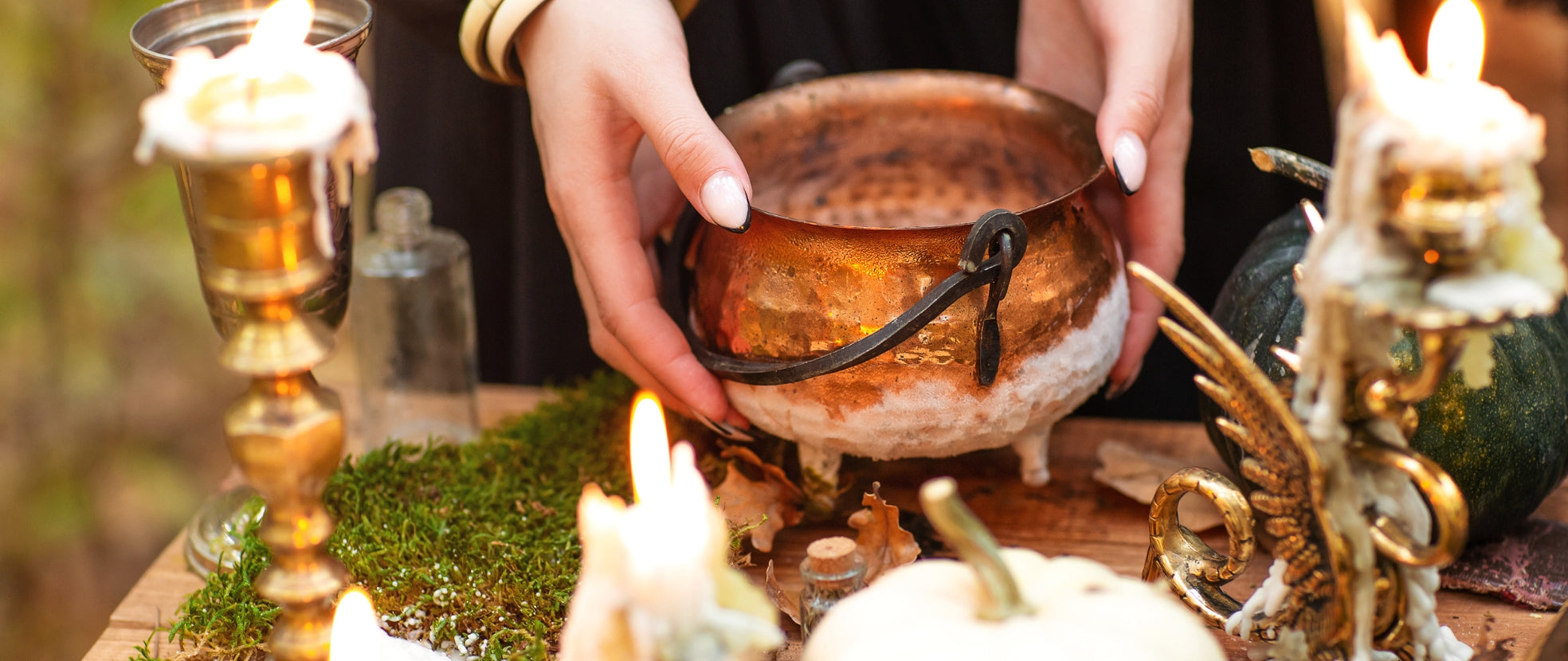Smoke cleansing has been around for thousands of years. It's an ancient ritual of producing smoke by burning aromatic herbs, woods, and resins for energy clearing. Smoke cleansing isn't only done for spiritual purposes like most Indigenous groups do. In many cultures around the world, it is performed to boost people's health and well being.
What Are the Benefits of Smoke Cleansing?
There's a wide array of health benefits attributed to smoke cleansing. For several years, our ancestors believed they have positive effects on our physical, mental, emotional, and spiritual health. Many cultures incorporate the practice into their everyday lives as a way of keeping negative energies at bay at all times.
Here are some ways regular smoke cleansing is beneficial for you according to Healthline:
1. It cleanses and purifies. Sacred plants like white sage have antimicrobial properties that keep out bacteria, viruses, and fungi. Sage could also repel insects from your space. The belief that the smoke coming from sage clears out insects, pathogens, and spiritual impurities is central to the smoke cleansing practice.
2. It raises consciousness. - The objective of smudging (smoke cleansing practiced by native American peoples) is to tap into the spiritual realm or to heighten intuition. Specifically, the burning of sage is thought to aid a person to sort spiritual dilemmas or achieve healing. Studies suggest that the thujone content in sage is mildly psychoactive which enhances consciousness in people during healing rituals.
3. It removes negative energy. - Do you sense an off-putting vibe dominating your space? This uncomfortable feeling comes from negative energies present in your environment. Past traumas, disagreements, illnesses, and other bad experiences can breed negativity. Drive it out with a thorough smoke cleanse.
And while at it, meditate and release those negative thoughts that may be fueling the unpleasant vibe in your home. Then set empowering intentions to reprogram your mindset with productive thought patterns.
4. Smoke cleansing can up your mood. - Smoke cleansing doesn't only banish negative energies from your body and your environment. The aroma released by burned sage also relieves anxiety and depression and lifts your mood. A 2016 study found out that white sage is abundant in compounds that activate receptors in the brain. These receptors minimize stress, reduce pain, and elevate mood levels.
5. It may improve sleep quality. - Been struggling with getting into a restful sleep? Smoke cleansing has been performed to dispel negativity that interrupts sleep since ancient times. It's even used to overcome insomnia in some cultures. Herbs that help with sleep problems are sage and lavender (and they also soothe anxiety).
6. Smoke cleansing may boost mental abilities. - Besides warding off negativity, enhancing intuition, and increasing mood levels, a smoke cleansing ritual can sharpen your memory and focus.
There are studies that document the promising effects of sage in enhancing the cognitive abilities of people with dementia and Alzheimer's disease, although further research is needed to support these findings.
What Herbs and Resins Are Used in Smoke Cleansing?

Not all botanicals used in smoke cleansing are equal. In addition to the distinct aroma they release when burned, different plants have various properties and offer unique benefits. It's important to understand what each herb, wood, or resin does so you'd know which plant aligns with your intention for performing a cleanse.
These are some of the sacred plants you can use in your cleansing practice and their individual properties:
Herbs
1. White sage - This herb is everyone's top-of-mind when it comes to smudging and smoke cleansing in general. Known for its rich healing energies and antimicrobial properties, white sage is often burned to improve air quality, reduce anxiety, and protect against evil spirits. It has a long history of usage in Greek, Egyptian, and Native American healing traditions.
Burning white sage (in the form of ground/bundled dried leaves or as an incense) gives off an earthy and minty aroma believed to:
- Remove bacteria, fungi, and viruses from the air
- Repel insects
- Boost intuition and mindfulness
- Reduce stress and anxiety
- Improve mood levels
The rising popularity of smoke cleansing has led to a surge in demand of white sage products, resulting in the illegal harvest and over harvesting of the plant. When sourcing white sage, make sure to get it from a legitimate supplier that adheres to ethical and sustainable farming practices to obtain it.
2. Sweetgrass (also called vanilla grass, manna grass, and holy grass) - It is a fragrant plant with smooth and glossy leaves used as a material for room fresheners, medicines, bath soaps, baskets, candles, and of course smoke cleansing. Sweetgrass has a warm vanilla-like scent (produced by the aromatic compound called coumarin) which becomes more pronounced when its leaves are dried.
It is considered a sacred plant by Indigenous groups in North America. It is often plaited into a long braid to symbolize the bond and strength of family and community. Like sage, it is burned usually at the beginning of a prayer or healing ritual to:
- Drive away negative energies and attract positive ones.
- Purify people the auras
- Cleanse bodies and objects
- Rid healing spaces and sacred spaces of negative energy
- Elicit pleasant dreams
- Connect people to the spirit world
- Stimulate love, peace, and harmony among people
3. Lavender - Another botanical that has been used since antiquity is the perennial flowering plant lavender. The name lavender is derived from the Latin word lavare meaning wash, a symbolic allusion to its cleansing properties. It was commonly used in baths to cleanse toxins from the body and spirit.
Lavender is commonly used as an essential oil which is extracted from fresh or partially dried lavender leaves or flowers. It is also turned into incense sticks and smudge bundles (the entire stem with its leaves and flowers are bundled tightly) for air purification purposes.
When burned, sweet-smelling lavender smoke produces the following effects:
- Soothes the emotions
- Relieves stress
- Balances the chakras
- Purifies the air
- Sets a relaxing ambiance
- Induces good sleep
- May boost mood levels and libido in women
- Removes allergens in the air
4. Cedar - Like sage and sweetgrass, cedar is used for driving out negative energies. It is also believed to protect against evil spirits. Wood from the cedar promotes protection and longevity and is used in charms, decors, and accessories to amplify these desires.
In addition to its cleansing and purifying a person, object, or space, smoke cleansing with cedar is performed for the following benefits:
- Promote peaceful thoughts
- Release high vibrational energy that safeguards the physical and spiritual bodies
- Interpret spiritual messages as well as messages from the inner self
- Increasing courage and confidence
- Grounding oneself to earthly energies
Whether you are setting the mood for your healing or meditation ritual, detoxifying your home, or de-stressing after a hectic week, lighting cedar is beneficial for your mental, physical, and spiritual wellness.
5. Mugwort - This medicinal herb is a common beer additive which imparts a hint of bitterness and sweetness to the beverage. Many people may consider mugwort as a common weed, but its leaves, stems, roots, and blossoms are made into different forms and are used in folk medicine. Mugwort is thought to be effective in treating anxiety, indigestion, and irregular periods.
The healing effects of the plant are attributed to its compound contents that have antibacterial, antioxidant, and anti-fungal properties. Burning mugwort incense is believed to result in the following benefits:
- Activates the third eye chakra and opens up psychic abilities
- Relaxes and opens the subconscious mind (resulting in vivid prophetic dreams)
- Stimulates imagination and creativity
- Detoxifies the body
- Relieves stress and anxiety
Resins

1. Palo santo - Mild, woody, and sweet-smelling palo santo (Spanish term for holy wood) clears negative energy and helps relieve pain, stress, and headache.
2. Copal - A fresh-smelling, fast-burning resin used to purify energies, raise vibrations, attract love, reveal invisible energies in a given space, and inspire insights into the Divine.
3. Frankincense - With a piney to lemony scent to it, frankincense induces tranquility and deepens spiritual experiences. It also increases strength and motivation on days when you're low on energy and inspiration.
4. Myrrh - Its warm, earthy, and slightly bitter scent helps enhance spiritual awareness before and during rituals. Myrrh is also used to bring about happiness, confidence, strength, and stability.
5. Dragon's Blood - A natural resin produced from the tropical dragon tree, this dark red resin is an excellent option for setting a calm ambiance. It produces a soft and sweet scent (almost similar to amber but sweeter) with some earthy tones that elicit healing and increased contemplation.
6. Benzoin - This herb resin is known for its vanilla undertone with earthy tones. Benzoin resin is burned to clear negative energy, balance the emotions, and soothe sadness, anger, greed, loneliness, and weariness. It's also believed to attract prosperity.
Regardless of your chosen plant/s, always remember to honour the origins of your botanicals and to ensure they're grown and harvested in the most sustainable and ethical ways possible. Be really intentional in seeking out how your plants have travelled through the supply chain.
Are they organic? Were they sprayed with herbicides/pesticides? Were they legally grown without disrespecting the customs and traditions of Indigenous peoples? These are some considerations to make when sourcing your herbs.
Additional Reminders in Using Herbs for Smoke Cleansing
So you've chosen the herbs to work with in your ritual. Now what's next?
Reiki master Jessie Quinn shares a couple of tips for a safe and successful smoke cleansing ceremony:
1. Establish an intention before lighting your herbs.
Setting an intention is pivotal in every cleansing ritual. Start by saying an intention of gratitude to the plants and cultural connections that made the use of the plant possible. Then follow it up with saying your desired intention.
This intention could be your guiding principle for what you aspire to be, or something you want to do or achieve (e.g., healing, prosperity, financial freedom, increased self-love, etc.). Light your herbs after stating your intention.
2. Be extra careful when handling your herbs.
Smoke cleansing involves working with open flame typically in indoor settings which poses a real fire hazard. So always exercise caution. Avoid leaving your cleansing stick burning like incense.
After lighting the end of the herb, waft your hand in front of it to put out the flame. And once you're done with your cleanse, squash the smoked herb in your abalone shell, ceramic dish, or ash tray to kill the flame entirely.
3. Avoid smoke cleansing in the presence of your pets.
Smudging or smoke cleansing offers amazing benefits to us humans, but it's not the case with cats and dogs. Sage may be a nontoxic herb and is generally safe to eat for dogs, but burning it around them is a different story.
The smoke may cause eye infections, allergies, or respiratory problems to our four-legged friends. Quinn advises cracking a window open immediately after your cleanse or relocating your pet to another room during your ritual.
Throughout history, herbs have been man's ally in maintaining a healthy mind, body, and spirit. In a modern world, they remain essential tools in keeping peace with ourselves, with others, and with our environment.
Eager to introduce smoke cleansing to your daily routine? You've come to the right place. Peace Streaks carries a wide range of herbs, resins, and many other tools you can use for your energy clearing ritual. You can get the items you need individually or in bulk and for whatever purpose and intention. Check out Peace Streaks today!
Sources:
Carricarte, L. (2016a, July 26). A Beginner's Guide to Herbs & Smudging. elephant journal. Elephant Journal Daily Blog, Videos, e-Newsletter & Magazine on Yoga + Organics + Green Living + Non-New Agey Spirituality + Ecofashion + Conscious Consumerism=it's about the Mindful Life. Retrieved March 30, 2022, from https://www.elephantjournal.com/2016/07/a-beginners-guide-to-herbs-smudging/
Cuncic, A. (2020, May 28). How Burning Sage May Help Your Physical and Psychological Health. Verywell Mind. Retrieved March 30, 2022, from https://www.verywellmind.com/the-benefits-of-burning-sage-4685244
Finlay, V. (2021, December 20). Cedar Uses and Benefits. Ceremoni. Retrieved March 30, 2022, from https://ceremoni.ca/blogs/resources/cedar-uses-and-benefits
M. (2021, December 13). 8 Impressive Benefits Of Lavender Incense. Natural Scents. Retrieved March 30, 2022, from https://naturalscents.net/incense/lavender-incense-benefits-42#benefits
Norris, R. (2021, March 15). A Beginner's Guide to Smudging, Including How to Choose the Right Herbs for Your Home. Martha Stewart. Retrieved March 30, 2022, from https://www.marthastewart.com/8068100/smudging-herb-guide
O. (2022, March 2). Mugwort Incense Benefits, Uses & Meaning. Reality Pathing. Retrieved March 30, 2022, from https://realitypathing.com/mugwort-incense-benefits-uses-meaning/
S. (2020, March 30). Mugwort: A Medicinal Herb With A Beer History. SPICEography. Retrieved March 30, 2022, from https://www.spiceography.com/mugwort/
Sweetgrass. (n.d.). The Canadian Encyclopedia. Retrieved March 30, 2022, from https://www.thecanadianencyclopedia.ca/en/article/sweetgrass
What Is Mugwort? (2022, January 10). Verywell Health. Retrieved March 30, 2022, from https://www.verywellhealth.com/mugwort-benefits-side-effects-dosage-and-interactions-4767226
White, A. (2020, June 22). 11 Benefits of Burning Sage, How to Get Started, and More. Healthline. Retrieved March 30, 2022, from https://www.healthline.com/health/benefits-of-burning-sage#takeaway





